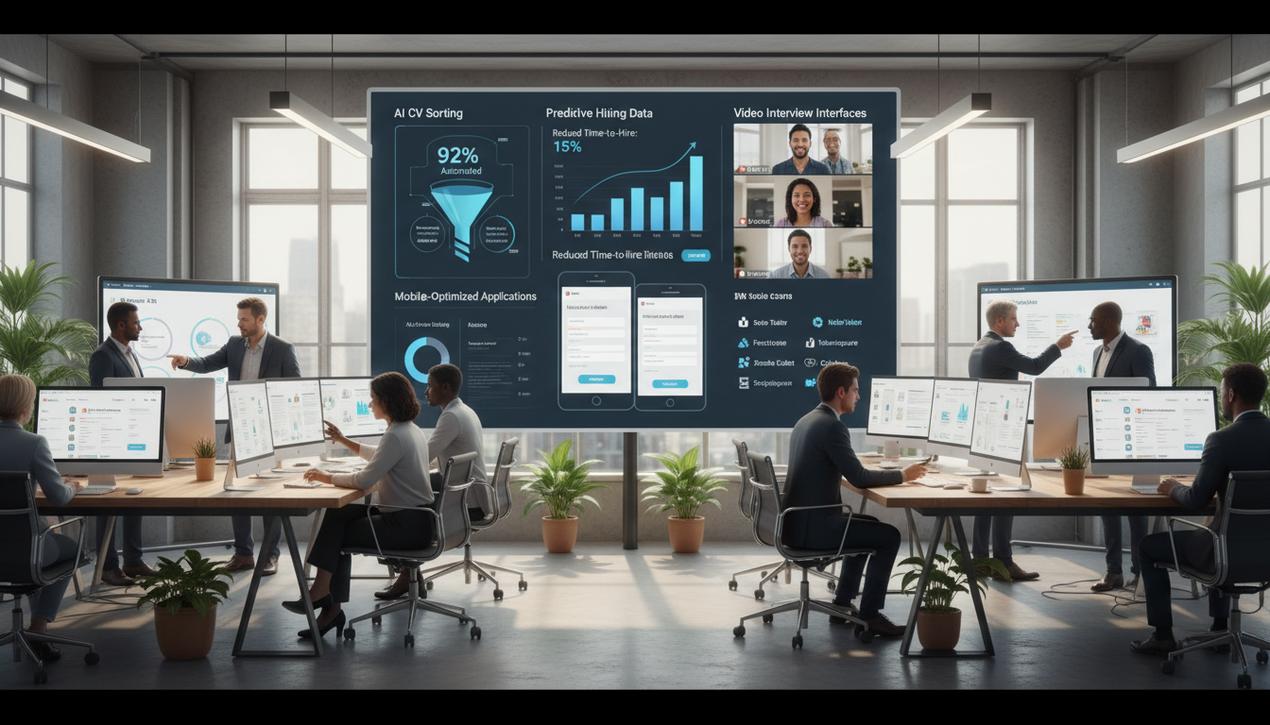The Complete Guide to the Best OCR Software in 2025


Have you ever faced the frustration of an uneditable PDF file? Whether you need to sign a contract, fix a typo, or extract critical data, locked documents can bring your workflow to a halt. Fortunately, Optical Character Recognition (OCR) software easily transforms this challenge into a simple task. These tools analyze images, scanned documents, and PDFs to extract text and convert it into fully editable formats. The global OCR market, valued at over $12 billion, is projected to grow by 14.8% annually through 2030, highlighting its crucial role in corporate digital transformation. By automating data entry, OCR software delivers significant time savings, reduces human error, and dramatically boosts productivity. Here is our curated selection of the 15 best OCR software solutions to help you unlock the full potential of your documents.
What Is OCR Software and What Are Its Benefits?
OCR software is a technology that converts various types of documents, such as scanned paper files, PDFs, or images from a digital camera, into editable and searchable data. The process involves analyzing the document’s structure and translating characters into machine-readable code, ready for use in word processors or spreadsheet applications. Adopting this technology offers major strategic advantages for any organization.
- Increased Productivity: Automating data entry frees up teams from manual, repetitive tasks, allowing them to focus on higher-value activities.
- Cost Reduction: Less time spent on manual entry and a drastic reduction in errors translate into substantial cost savings and improved operational efficiency.
- Data Reliability: Modern OCR solutions, often powered by AI, achieve accuracy rates exceeding 99%, ensuring higher quality data across your business systems.
- Enhanced Accessibility: By digitizing paper archives, OCR makes information instantly accessible and searchable through keyword queries, optimizing document management.
- Process Automation: OCR is a foundational technology for Intelligent Document Processing (IDP), enabling automated workflows for processing invoices, contracts, and forms without human intervention.
Best OCR Software for Businesses and Professionals
These robust solutions are engineered to handle high document volumes, deliver maximum accuracy, and integrate seamlessly into complex professional environments.
1. Kofax OmniPage Ultimate
OmniPage is a benchmark for high-volume document conversion. It transforms paper, PDFs, and images into a multitude of formats, including Word, Excel, PowerPoint, HTML, and ePub. Its key strength lies in automation, with the ability to create workflows that process batches of files from specific folders or email inboxes. It supports over 120 languages.
2. ABBYY FineReader PDF
With over two decades of development, ABBYY FineReader is a leading AI-powered OCR solution. It allows users to convert, edit, protect, and collaborate on PDFs within a single workflow. The tool supports nearly 200 languages and offers advanced collaborative features like annotation, commenting, and multiple digital signatures, making it a top choice for legal and financial sectors.
3. Adobe Acrobat Pro
Often considered the industry standard for PDF management, Adobe Acrobat Pro includes a powerful and seamlessly integrated OCR feature. When you open a scanned document, it automatically recognizes the text and makes it editable. Its flawless integration with the Adobe Creative Cloud and other services makes it an incredibly convenient tool for professionals already in that ecosystem.
4. Readiris
Readiris stands out for its versatility. In addition to standard conversions to office formats, it can convert documents into audio files (.mp3, .wav), a unique feature for accessibility. It also integrates voice recognition for dictating comments and supports barcode reading, PDF merging, and direct text editing within images.
5. Rossum
Specializing in intelligent invoice processing, Rossum uses advanced AI to scan, identify, and extract key information from documents. It then integrates with a company’s ERP and CRM systems to fully automate the invoice handling lifecycle. It is an ideal solution for accounting departments managing a large volume of supplier invoices.
6. Nanonets
Nanonets is an AI-based workflow automation platform that uses OCR to capture and process data from invoices, receipts, and ID cards. Through machine learning, the tool continuously improves its accuracy with each document it processes. Its API and Zapier integrations allow for easy connection to hundreds of other applications.
7. Docsumo
Similar to Nanonets, Docsumo combines AI and machine learning to extract and validate data. It allows users to define custom validation rules and automatically categorize documents. Its real-time fraud detection feature makes it a valuable tool for securing document processing workflows.
Best Free and Online OCR Software
For occasional or personal needs, these free tools accessible directly from your browser are excellent options.
8. SimpleOCR
As its name suggests, SimpleOCR is a basic yet effective solution for personal use. Its 120,000-word dictionary aids in recognition, and its “despeckle” feature improves the clarity of blurry text. It preserves basic formatting like bold and italics and allows users to isolate specific zones for extraction.
9. Online OCR
With no software to install, Online OCR allows you to quickly convert PDFs and images (JPG, PNG) into Word, Excel, or plain text. The free service supports 46 languages and can process up to 15 files per hour, making it a perfect solution for quick, one-off conversions.
10. NewOCR
NewOCR sets itself apart from other free tools by having no limit on the number of files you can process. It recognizes 106 languages, including ancient scripts and mathematical equations. It intelligently analyzes page layout even from poor-quality images and integrates with Google Docs and translation tools.
11. Tesseract
Tesseract is an open-source OCR engine originally developed by HP and now maintained by Google. It is extremely powerful but is primarily aimed at developers looking to integrate OCR capabilities into their own applications. It supports over 100 languages and can be trained to recognize new scripts.
12. Amazon Textract
Part of the AWS suite, Amazon Textract goes beyond simple OCR. Using machine learning, it extracts not only text but also handwriting, tables, and form data by understanding the document’s structure. A generous free tier makes it accessible for small-scale projects.
13. LightPDF
This online service is incredibly straightforward: drag and drop your file, select the language, and convert. No registration is required for basic use. LightPDF ensures security by automatically deleting files from its servers after processing. A VIP plan unlocks more features for a low cost.
Mobile Apps for an OCR in Your Pocket
Your smartphone is a powerful scanner. These apps are perfect for digitizing documents on the go.
14. Microsoft Lens
Free and highly effective, Microsoft Lens (formerly Office Lens) lets you scan documents, whiteboards, and business cards. The app automatically straightens and cleans up the image, then uses OCR to extract the text, which can be exported to Word, PowerPoint, OneNote, or PDF.
15. Google Keep
Google’s note-taking app includes a handy hidden OCR feature. Simply take a photo of a document within Google Keep, tap the image, and select “Grab image text.” The extracted text will appear directly in your note, ready to be copied and used.
How to Choose the Right OCR Software
Faced with this diverse range of options, your choice should be guided by a clear analysis of your needs.
- Volume and Frequency: For occasional use, a free online tool is sufficient. For hundreds of documents per month, a professional solution with batch processing is essential.
- Document Type: Are you processing structured invoices, text-heavy contracts, or handwritten forms? AI-based solutions like Rossum or Nanonets are superior for structured data.
- Integration Needs: Does your OCR tool need to communicate with your CRM, ERP, or cloud storage service? Check for available APIs and native integrations.
- Accuracy and Languages: If you work with multilingual documents or variable-quality scans, opt for established solutions like ABBYY or Kofax that guarantee high accuracy.
- Budget: The price range is wide, from completely free to several hundred dollars per month. Define your budget based on the expected return on investment.
The era of manual data entry is over. In 2025, OCR software is no longer just a simple utility but a strategic investment for any organization seeking to optimize its processes, improve data reliability, and accelerate its digital transformation. By correctly assessing your needs, you can choose the tool that will turn your mountains of documents into a source of structured, actionable data.




